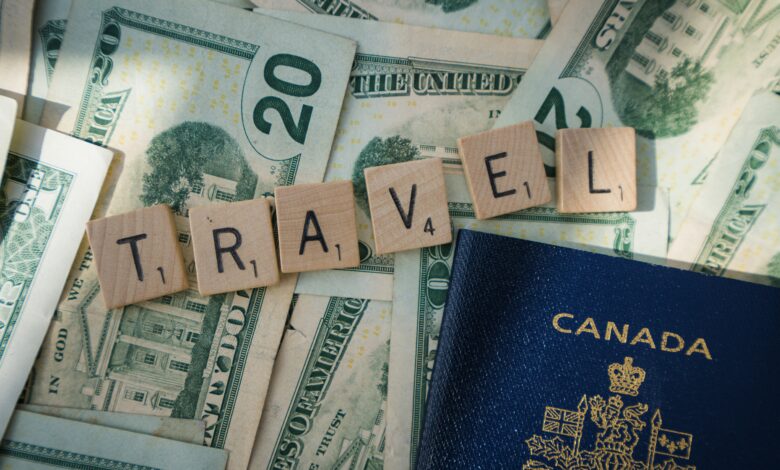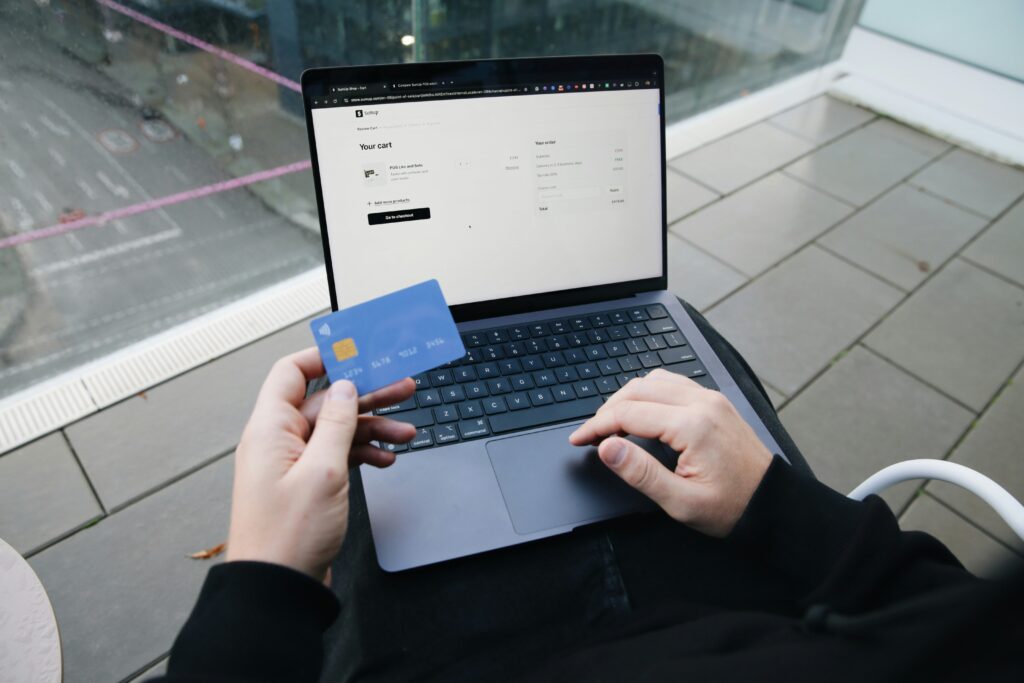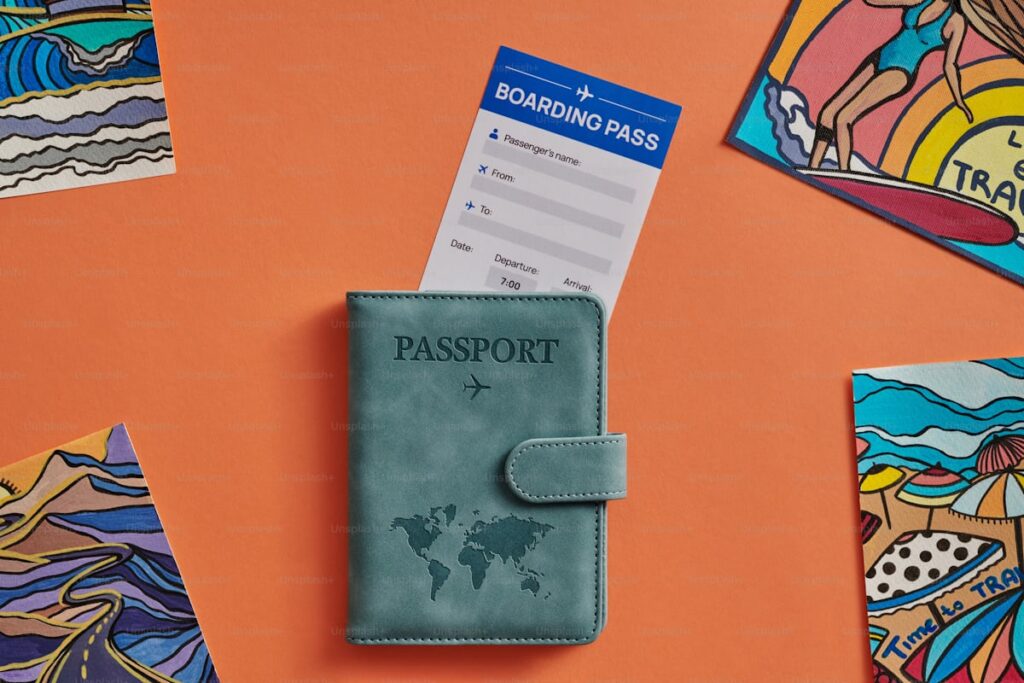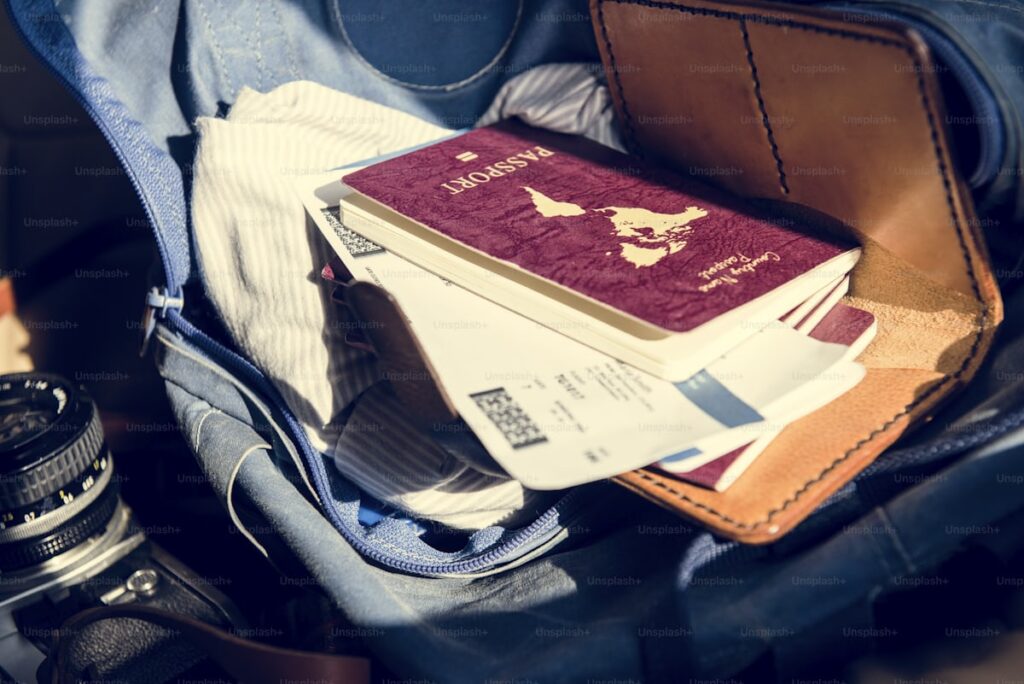How to Budget for a Vacation: Your Step-by-Step Guide to Affordable Travel

Last summer, my friend Marcus came back from his European trip completely broke. He’d blown through his savings in the first week and spent the remaining two weeks stressed about money instead of enjoying himself. Sound familiar? Vacation budgeting can make or break your dream trip.
I learned this lesson the hard way during my first solo adventure to Thailand. Without proper planning, I found myself eating instant noodles for five straight days just to afford my return flight. That experience taught me everything about how to budget for a vacation properly.
Smart vacation budgeting isn’t about limiting your fun. It’s about maximizing your experiences while protecting your financial future. Ready to learn how to plan that perfect getaway without coming home to financial disaster?
The Importance Of Budgeting For A Vacation
Travel expenses can spiral out of control faster than you can say “another round of piña coladas.” Without a solid budget, your dream vacation quickly becomes a financial nightmare that haunts you for months afterward.
Vacation costs typically include obvious expenses like flights and hotels, plus sneaky budget busters like resort fees, airport meals, and those “must-have” souvenirs. These hidden costs can easily double your expected spending.
Financial planning for travel serves the same purpose as your monthly household budget. It gives you control over your money instead of letting your money control your vacation experience.
Peace of mind represents the biggest benefit of vacation budgeting. When you know exactly how much you can afford to spend, you relax and enjoy every moment instead of constantly worrying about your bank account.
Here’s what proper vacation budgeting accomplishes for smart travelers:
- Clear spending limits prevent overspending disasters
- Advanced planning unlocks better deals and discounts
- Emergency preparedness handles unexpected costs gracefully
- Stress-free enjoyment without financial anxiety
- Post-vacation stability protects your long-term financial goals
How To Budget For A Vacation In 5 Easy Steps
Creating a realistic vacation budget requires systematic planning and honest assessment of your financial situation. These five steps guide you through the entire process from dream to departure.
Step 1: Determine Your Costs
Cost estimation forms the foundation of every successful vacation budget. You can’t save for what you can’t calculate accurately.

Start by researching major expense categories for your chosen destination:
- Transportation: flights, trains, rental cars, local transit
- Accommodation: hotels, Airbnb, hostels, resorts
- Food: restaurants, groceries, street food, beverages
- Activities: tours, attractions, entertainment, excursions
- Miscellaneous: shopping, tips, fees, emergencies
Destination research reveals typical price ranges for each category. Use websites like Numbeo to compare living costs between cities, or Budget Your Trip for comprehensive destination guides.
Seasonal pricing dramatically affects vacation costs. Peak season prices can double or triple compared to off-season rates. Factor this into your timeline planning for maximum savings potential.
Group dynamics influence per-person costs significantly. Family vacations often reduce accommodation and transportation costs per person but increase food and activity expenses.
Length of stay creates economies of scale for longer trips. Weekly hotel rates, extended car rentals, and bulk activity packages often provide better value than daily rates.
Step 2: Learn About Your Destination
Destination knowledge directly impacts your budget accuracy and savings opportunities. The more you understand about local costs and customs, the better you can plan and save.

Currency research helps you understand real costs and exchange rate implications. Use XE Currency for current rates and historical trends to time your currency exchanges optimally.
Local customs around tipping, bargaining, and service charges affect your daily spending significantly. What seems like a great deal might become expensive once you add mandatory taxes and tips.
Seasonal considerations extend beyond pricing to availability and weather. Hurricane season, monsoons, or extreme temperatures might require additional gear, insurance, or contingency planning.
Transportation options vary dramatically by destination. European cities with excellent public transit systems cost far less for local travel than car-dependent American destinations.
Free activities and attractions can dramatically reduce your entertainment budget. Research local parks, museums with free days, walking tours, and cultural events before you travel.
Local food scenes offer authentic experiences at fraction of tourist restaurant prices. Street food, local markets, and neighborhood eateries provide cultural immersion while saving money.
Shopping opportunities range from duty-free bargains to local crafts and specialties. Understanding what’s worth buying where prevents overpricing and regret purchases.
Step 3: Save In Advance
Advanced saving represents the most crucial element of vacation budgeting success. Without adequate savings, even the best budget becomes meaningless.

Timeline calculation determines your monthly savings target. Divide your total vacation cost by the number of months until departure to establish realistic saving goals.
For example, a $3,000 vacation planned 12 months ahead requires $250 monthly savings, or about $58 weekly. This manageable amount prevents financial strain while building your travel fund steadily.
Automatic transfers to a dedicated vacation savings account ensure consistent progress toward your goal. Set up transfers immediately after payday to prioritize vacation savings before other spending temptations arise.
High-yield savings accounts maximize your vacation fund growth through earned interest. Online banks like Ally or Marcus by Goldman Sachs offer competitive rates without fees.
Side income opportunities can accelerate your vacation savings timeline. Consider freelancing, selling unused items, or taking on temporary work specifically to fund your trip.
Expense reduction in other areas frees up money for vacation savings. Review monthly subscriptions, dining out frequency, and entertainment spending to redirect money toward your travel goal.
Visual motivation helps maintain saving discipline over long periods. Use apps like QAPITAL or create a visual savings chart to track progress toward your vacation goal.
Step 4: Get Prepared
Preparation phase involves organizing your finances and travel logistics for smooth vacation execution within your budget constraints.
Dedicated savings account separates vacation funds from daily spending money, preventing accidental use for other purposes. Many banks offer specific vacation or travel savings accounts with helpful features.
Travel credit cards can provide valuable rewards, insurance, and foreign transaction fee savings. Cards like Chase Sapphire Preferred or Capital One Venture offer excellent travel benefits.
Budget tracking apps like Mint or YNAB help monitor your saving progress and identify areas for improvement.
Currency planning involves deciding how to handle money abroad. Research ATM networks, notify banks of travel plans, and understand foreign transaction fees to minimize currency conversion costs.
Travel insurance protects your vacation investment against unforeseen circumstances like illness, weather, or political issues. Compare policies through InsureMyTrip or SquareMouth.
Documentation organization ensures you have necessary passports, visas, and identification well before departure. Last-minute document expediting costs can blow your budget quickly.
Health preparations including vaccinations, prescriptions, and medical clearances prevent expensive overseas medical costs and vacation disruptions.
Step 5: Be A Disciplined Traveler
Travel discipline separates successful budget travelers from those who return home broke and regretful. Your vacation budget only works if you follow it consistently.

Daily spending limits provide structure while maintaining flexibility for spontaneous experiences. Calculate your daily budget by dividing remaining funds by remaining days.
Expense tracking during travel prevents budget creep and keeps you accountable. Use apps like Trail Wallet or simple notebook methods to monitor daily spending.
Priority spending focuses your limited budget on experiences that matter most to you. Decide in advance whether you prioritize food, activities, accommodations, or shopping.
Souvenir budgeting prevents last-minute shopping sprees that destroy carefully planned budgets. Set aside specific amounts for gifts and mementos, then stop when you reach your limit.
Contingency planning prepares you for unexpected opportunities or emergencies without derailing your entire budget. Reserve 10-15% of your budget for unplanned expenses.
Group dynamics require clear communication about shared expenses, individual budgets, and spending decisions. Discuss financial expectations before traveling to prevent awkward situations.
Temptation resistance becomes crucial when faced with expensive activities or luxury upgrades. Remember your financial goals and prioritize long-term stability over short-term indulgence.
Tips For Sticking To Your Vacation Budget
Budget adherence separates successful vacation planners from those who struggle with travel debt for months afterward. These proven strategies help you stay on track while maximizing your travel experience.
1. Create A Vacation Emergency Fund
Emergency funds protect your vacation budget and personal finances from unexpected costs that inevitably arise during travel.

Vacation emergencies differ from regular emergencies but can be equally expensive. Medical issues, transportation delays, weather disruptions, and equipment failures all require immediate financial solutions.
Fund size should equal 15-20% of your total vacation budget, or minimum $500-1,000 depending on destination and trip length. This provides adequate cushion for most common travel emergencies.
Separate storage keeps emergency funds distinct from daily vacation spending money. Consider traveler’s checks, separate bank accounts, or emergency credit cards reserved exclusively for genuine emergencies.
Usage criteria should be clearly defined before departure to prevent casual dipping into emergency reserves. True emergencies threaten health, safety, or ability to return home.
IMO, emergency fund discipline proves just as important as building the fund initially. Many travelers rationalize non-emergency purchases as “emergencies” when their regular budget runs low.
Post-vacation fund management matters too. If you don’t use your vacation emergency fund, redirect it toward future travel savings or general emergency fund building rather than treating it as bonus spending money.
2. Choose Budget-Friendly Destinations
Destination selection represents the single biggest factor in vacation affordability. Your location choice influences every other budget category significantly.
Cost of living research helps you understand realistic budget requirements for different destinations. Eastern Europe, Southeast Asia, and Central America offer incredible experiences at fraction of Western Europe or North American costs.
Currency strength against your home currency affects purchasing power abroad. Strong dollar periods make international travel more affordable for Americans, while weak periods favor domestic destinations.
Infrastructure development impacts transportation, accommodation, and activity costs. Well-developed tourist infrastructure often means higher prices but greater convenience and reliability.
Competition levels among tourism providers affect pricing. Destinations with many hotels, restaurants, and activity operators typically offer better value than places with limited options.
Seasonal patterns create dramatic price swings in many destinations. Shoulder season travel offers excellent weather and lower prices compared to peak season periods.
Local events and festivals can either enhance your experience or dramatically increase costs depending on timing. Research major events during your planned travel dates.
3. Choose Budget-Friendly Accommodations
Accommodation costs typically represent 25-40% of total vacation budgets, making this category crucial for overall budget success.

Lodging options span from luxury resorts to hostels, with numerous alternatives between extremes. Consider hotels, motels, Airbnb, vacation rentals, hostels, and even camping based on your comfort level and budget.
Location trade-offs often provide significant savings. Staying slightly outside city centers or tourist areas reduces costs while still providing access to attractions via public transportation.
Amenity evaluation helps you pay only for features you’ll actually use. Pool access, room service, concierge services, and spa facilities add costs that budget-conscious travelers might skip.
Booking timing significantly affects accommodation prices. Last-minute deals exist but carry risk, while advance booking often provides better selection and moderate pricing.
Alternative accommodation platforms like Airbnb, VRBO, and Hostelworld offer unique options often cheaper than traditional hotels.
Loyalty programs and membership discounts can provide substantial savings for frequent travelers. AAA, AARP, and credit card partnerships often include hotel discounts.
4. Drive Yourself
Self-driving offers significant cost savings for certain types of vacations while providing schedule flexibility and control over your travel experience.
Distance considerations make driving practical for trips under 800-1,000 miles from home. Beyond that distance, flight costs and time savings often make flying more practical.
Group economics favor driving for families or friend groups traveling together. Per-person transportation costs decrease dramatically when sharing fuel and vehicle expenses among multiple travelers.
Destination accessibility affects driving practicality. National parks, small towns, and rural areas often require personal transportation regardless of how you arrive.
Vehicle costs include fuel, tolls, parking, insurance, and wear-and-tear expenses. Calculate total driving costs accurately to compare against flight alternatives.
Flexibility benefits allow spontaneous route changes, extra stops, and schedule adjustments impossible with fixed airline tickets. This flexibility often enables additional experiences within your budget.
Accommodation savings become possible when driving allows you to stay outside expensive city centers or tourist zones while still maintaining easy access to attractions.
Packing advantages eliminate airline baggage fees and restrictions, allowing you to bring camping gear, sports equipment, or bulk supplies that save money at your destination.
5. Meet People
Local connections provide invaluable insights into authentic, affordable experiences while enriching your cultural understanding of destinations.
Cultural immersion happens naturally when you connect with local residents who can share perspectives impossible to gain from guidebooks or tourist information.
Cost-saving tips from locals help you find affordable restaurants, free activities, and money-saving strategies that tourist-focused businesses won’t advertise.
Safety information from trusted locals helps you avoid dangerous areas, common scams, and tourist traps that can drain your budget quickly.
Hidden gems often emerge through local recommendations. Residents know spectacular viewpoints, authentic eateries, and unique experiences that don’t appear in standard travel guides.
Social opportunities through hostels, walking tours, language exchanges, and community events provide natural ways to meet both locals and fellow travelers.
Language practice with patient locals often proves more valuable than expensive language classes while building meaningful connections.
Networking tools like Meetup, Couchsurfing events, and local Facebook groups help you connect with people before and during your travels.
6. Find Inexpensive Ways To Have Fun
Free and cheap activities often provide more memorable experiences than expensive tourist attractions while keeping your vacation budget intact.
Nature activities like hiking, swimming, beachcombing, and wildlife watching cost nothing but provide incredible experiences and photo opportunities.

Walking tours in most cities offer free or tip-based exploration options led by knowledgeable locals who share history, culture, and insider perspectives.
Museums and galleries frequently offer free admission days, student discounts, or pay-what-you-wish hours. Research these opportunities before visiting expensive cultural institutions.
Local markets provide authentic cultural experiences while offering inexpensive food, unique crafts, and people-watching opportunities that expensive restaurants and shops can’t match.

Festivals and events happening during your visit often provide free entertainment, local food, and cultural experiences that would cost significantly more as organized tours.
Self-guided exploration using smartphone apps, downloaded maps, and travel guides eliminates expensive guided tour costs while allowing you to explore at your own pace.

Outdoor activities like cycling, jogging, picnicking, and playground visits cost little but provide exercise, fresh air, and local neighborhood exploration.
Final Thoughts
Vacation budgeting transforms travel dreams into achievable realities without jeopardizing your financial security. The strategies outlined here have helped thousands of travelers enjoy amazing experiences within their means.
Advanced planning remains the cornerstone of budget travel success. Start saving and researching at least 6-12 months before your planned departure date for maximum savings opportunities.
Discipline during travel proves just as important as pre-trip planning. Your carefully crafted budget only works if you follow it consistently throughout your vacation.
Emergency preparedness protects both your vacation experience and your long-term financial health from unexpected costs that arise during travel.
Remember, the goal isn’t to eliminate all vacation spending or avoid experiences you value. Smart budgeting helps you maximize experiences while minimizing financial stress and long-term consequences.
Your dream vacation awaits, and proper budgeting makes it financially possible. Start planning today, stick to your budget tomorrow, and create memories that last forever. FYI, the best vacations aren’t always the most expensive ones 🙂
Ready to start planning your budget-friendly adventure? Choose your destination, calculate your costs, and begin saving for the trip of a lifetime!